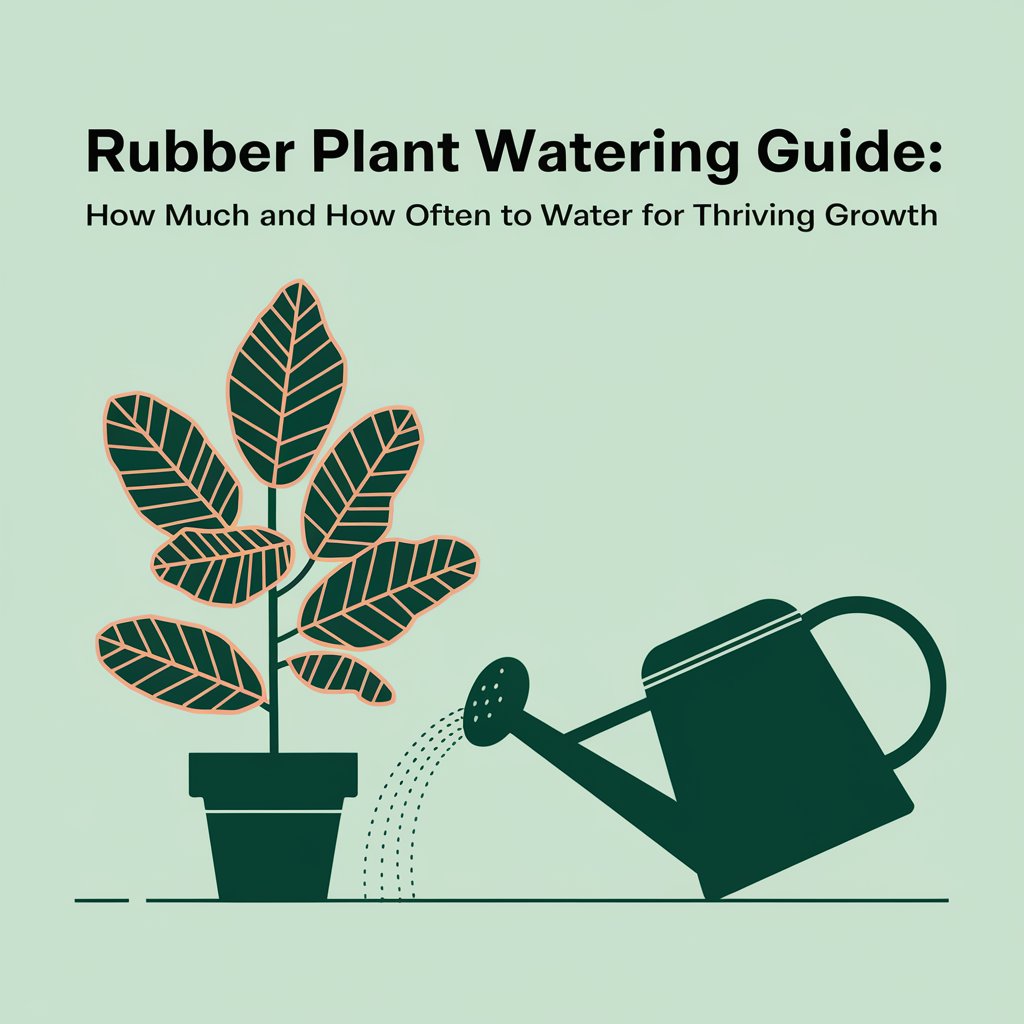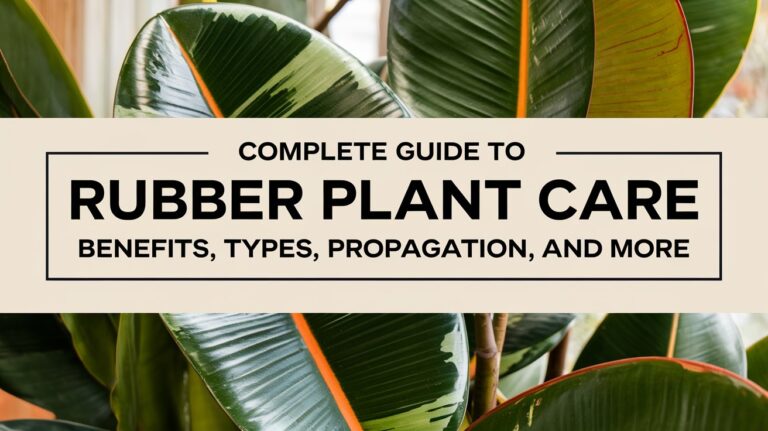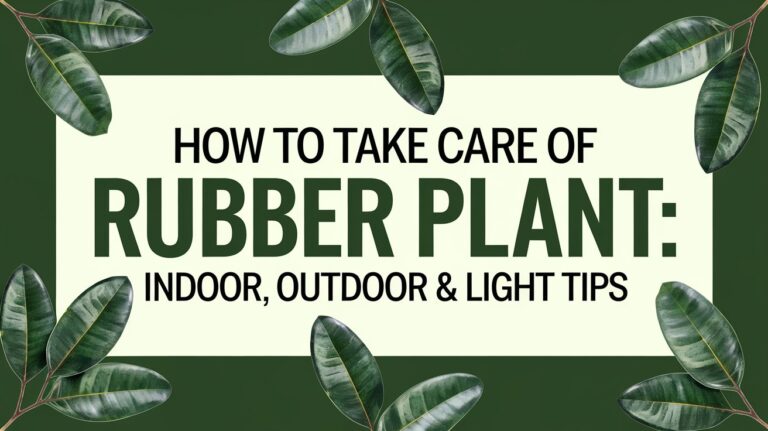Rubber plants are undeniably one of the most striking indoor plants. Their glossy leaves and resilient nature make them a favorite for plant lovers. However, like all houseplants, they have specific needs—especially when it comes to watering. If you’ve ever wondered, “How much water does a rubber plant need?” or “How often should I water a rubber plant?”, this guide is here to provide clarity, based on my own experiences.
Understanding Rubber Plant Water Needs
Rubber plants (Ficus elastica) are tropical by nature, which means they love humidity and moisture. However, they also hate being overwatered. The key is finding the perfect balance. I’ve had moments where I either underwatered or overwatered, and my plants quickly let me know something was wrong.
Their leaves store some moisture, so they can tolerate occasional missed watering. But prolonged neglect or excess water can lead to trouble. Whether you’re dealing with a mature plant or a baby rubber plant, their needs are similar but require slightly tailored care.
How Much Water Does a Rubber Plant Need?
When it comes to how much water a rubber plant needs, I always water until the soil is evenly moist but not soggy. For a smaller or baby rubber plant, I adjust the amount to avoid oversaturating the soil.
Here’s what works for me:
- For larger pots, I use about 1–2 liters of water, depending on the size.
- Smaller pots or younger plants need less—just enough to moisten the top 2–3 inches of soil.
Always check the soil first. If it feels dry when you poke your finger 2 inches deep, it’s time to water.
How Often to Water a Rubber Plant
The rubber plant watering schedule varies based on factors like the season, humidity, and light conditions.
- Spring and Summer: During their growing season, I water my plant once a week. If the weather is particularly hot, I might check midweek.
- Fall and Winter: Growth slows down, so I water every 2–3 weeks. Rubber plants don’t need as much water during their dormant phase.
For indoor setups, the frequency might change based on heating or air conditioning. I’ve noticed my indoor rubber plant needing less water during winter because of lower evaporation.
How to Recognize Overwatering or Underwatering
If you’re like me, you’ve probably worried about overwatering or underwatering at some point. Here’s how I learned to identify the signs:
Overwatered Rubber Plant
- Yellowing leaves: A clear sign that the roots are drowning.
- Soggy soil: If the soil stays wet for days, it’s a problem.
- Drooping leaves: Yes, even overwatering can make leaves droop.
Fix: Let the soil dry out completely before the next watering. If root rot has set in, you might need to repot your plant.
Underwatered Rubber Plant
- Dry, crumbly soil: A telltale sign that your plant is thirsty.
- Curling or drooping leaves: Particularly common in a baby rubber plant under watered scenario.
- Stunted growth: The plant stops producing new leaves.
Fix: Water deeply and evenly. Regular watering will bring it back to life.
Best Practices for Rubber Plant Watering
Over time, I’ve developed a few golden rules for rubber plant watering:
- Use Room-Temperature Water
Cold water can shock the roots, so I always let tap water sit for a few hours to reach room temperature. - Ensure Proper Drainage
Always use a pot with drainage holes. Rubber plants hate sitting in water. - Adjust for Humidity
I’ve placed my plant near a humidifier during dry winters. Misting occasionally helps, especially for a baby rubber plant.
Rubber Plant Propagation in Water
Did you know you can propagate a rubber plant using water? I’ve done this several times, and it’s surprisingly simple.
How to Root a Rubber Tree Plant in Water
- Select a healthy cutting with a rubber plant leaf node.
- Submerge the node in clean water, ensuring no leaves touch the water.
- Change the water weekly to prevent bacteria buildup.
Within weeks, roots will appear, and you can transfer the cutting to soil. If you’re asking, “How do you root a rubber plant in water?”, this method is as straightforward as it gets.
Challenges and Observations
As a plant enthusiast, I’ve come across unexpected water-related challenges. For instance:
- Mac Plant Water Discharge Rubber: Sometimes, plants release excess water through guttation, which isn’t a major issue but signals overwatering.
- Rubber Plant Water Intake Litres: For larger rubber plants, I’ve found that they might need up to 2 liters per watering, especially in summer.
Understanding your plant’s specific needs is crucial, and this can vary based on size, environment, and even the season.
FAQs About Rubber Plant Watering
1. How often do you water indoor rubber plants?
Once a week during summer and every 2–3 weeks in winter.
2. Can you grow a rubber plant in water?
Yes, rubber plant propagation in water is easy and effective.
3. What’s the difference between overwatered and underwatered rubber plants?
Overwatered plants have yellowing leaves and soggy soil, while under watered plants have dry soil and curling or drooping leaves.
4. How do I fix an overwatered rubber plant?
Let the soil dry completely, and reduce watering frequency.
Conclusion
Caring for a rubber plant is rewarding, especially when you understand its watering needs. By learning how much water does a rubber plant need and how often to water a rubber plant, you’ll ensure its lush growth and vibrant leaves.
Have you faced any challenges with rubber plant watering? Share your stories or tips—I’d love to hear from you! 😊
Hi, I’m Pritesh, the heart and hands behind Roots & Earth. My love for plants started when I was just 5 years old, planting trees alongside my grandfather. Those early experiences in the garden left a lasting impression, shaping my deep connection to nature and sparking a lifelong passion for nurturing green spaces.
With an MBA under my belt, I’ve blended my business acumen with my love for gardening, creating Roots & Earth as a way to share my knowledge and inspire others. When I’m not working in my own home garden, you’ll find me traveling to the mountains—my favorite getaway for reconnecting with the natural world.
At Roots & Earth, I’m here to guide you on your gardening journey, whether you’re a seasoned green thumb or just starting out. Together, let’s cultivate beautiful, thriving spaces that enrich our lives and the earth.




